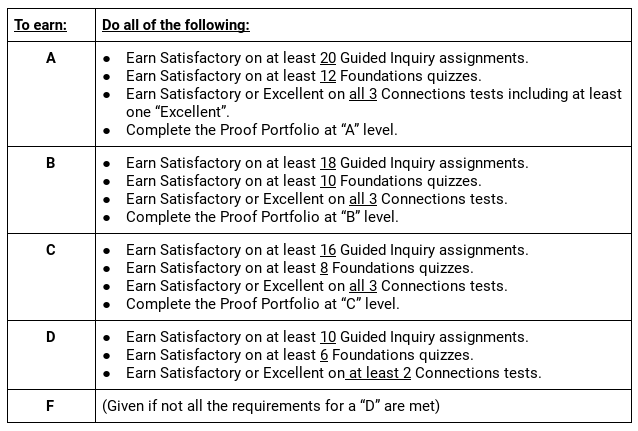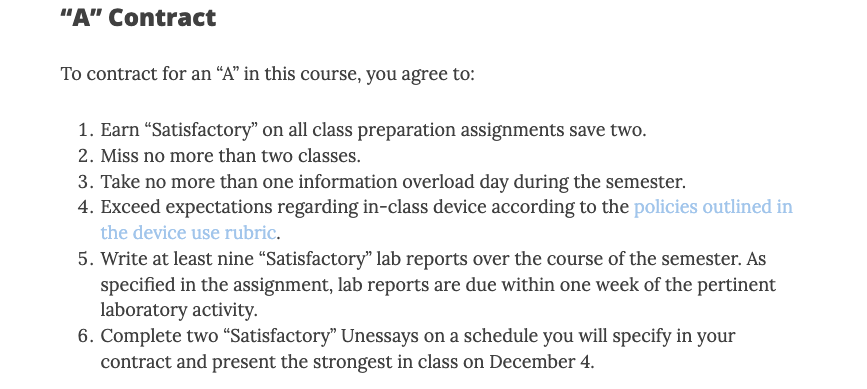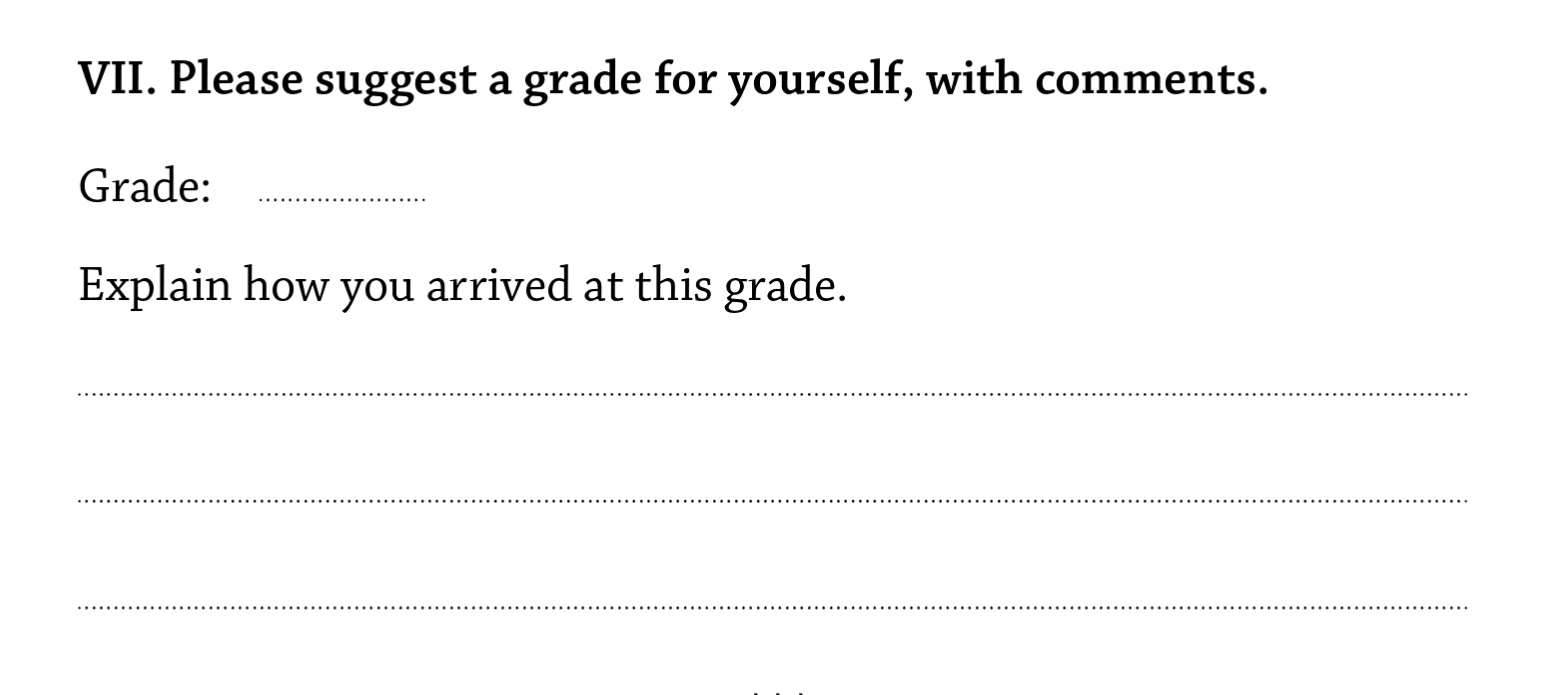Broadbent, J., Panadero, E., & Boud, D. (2018). Implementing summative assessment with a formative flavour: A case study in a large class. Assessment & Evaluation in Higher Education, 43(2), 307–322. https://doi.org/10.1080/02602938.2017.1343455
Blum, S., & Kohn, A. (2020). Ungrading. West Virginia University Press.
Elbow, P., & Danielewicz, J. (2008). A Unilateral Grading Contract to Improve Learning and Teaching [co-written with Jane Danielewicz]. College Composition and Communication. 3. https://scholarworks.umass.edu/cgi/viewcontent.cgi?article=1002&context=eng_faculty_pubs
Flaherty, C. (2020, November 30). Students seek pass-fail options again for fall in light of COVID-19. Inside Higher Ed, Retrieved February 16, 2022. https://www.insidehighered.com/news/2020/11/30/students-seek-pass-fail-options-again-fall-light-covid-19
Hiller, T. B., & Hietapelto, A. B. (2001). Contract Grading: Encouraging Commitment to the Learning Process through Voice in the Evaluation Process. Journal of Management Education, 25(6), 660–684. https://doi.org/10.1177/105256290102500605
Inoue, Asao B. (2019). Labor-Based Grading Contracts: Building Equity and Inclusion in the Compassionate Writing Classroom. The WAC Clearinghouse; University Press of Colorado. https://doi.org/10.37514/PER-B.2019.0216.0
Litterio, L. (2018). Contract grading in the technical writing classroom: Blending community-based assessment and self-assessment. Assessing Writing, 38, 1–9. https://doi.org/10.1016/j.asw.2018.06.002
Mueller, J. 2005. “The Authentic Assessment Toolbox: Enhancing Student Learning through Online Faculty Development.” Journal of Online Learning and Teaching 1 (1): 1–7. https://jolt.merlot.org/vol1_no1_mueller.htm
Nilson, L. (January 19, 2016). Yes, Virginia, There’s a Better Way to Grade. Inside Higher Ed.https://kb.ecampus.uconn.edu/2021/10/07/specifications-grading-a-method-for-improving-student-performance/
Nilson, L. (2014). Specifications grading: Restoring rigor, motivating students, and saving faculty time. Sterling, VA: Stylus Publishing.
Parker, J. (2021). Specifications Grading: A Method for Improving Student Performance, University of Connecticut.https://kb.ecampus.uconn.edu/2021/10/07/specifications-grading-a-method-for-improving-student-performance/
Palmer, M., & Streifer, A. (2020) Alternative Grading: Practices Support Both Equity and Learning. https://cte.virginia.edu/blog/2020/12/04/alternative-grading-practices-support-both-equity-and-learning
Schinske, J., & Tanner, K. (2014). Teaching More by Grading Less (or Differently). CBE life sciences education, 13(2), 159–166. https://doi.org/10.1187/cbe.cbe-14-03-0054
Spidell, C., & Thelin, W. (2006). Not ready to let go: A study of resistance to grading contracts. Composition Studies 34(1), 35-68. https://www.uc.edu/content/dam/uc/journals/composition-studies/docs/backissues/34-1/Spidell%20and%20Thelin.pdf
Stommel, J. (2020). Ungrading: a FAQ. https://www.jessestommel.com/ungrading-an-faq/
Volk, S. (2016, March 27). Contract Improv – Three Approaches to Contract Grading | After Class [Blog]. After Class: Education & Democracy. https://steven-volk.blog/2016/03/27/contract-improv-three-approaches-to-contract-grading/
Why Do Ungrading? · CITLS · Lafayette College. (n.d.). Retrieved February 17, 2022, from https://citls.lafayette.edu/why-do-ungrading/








